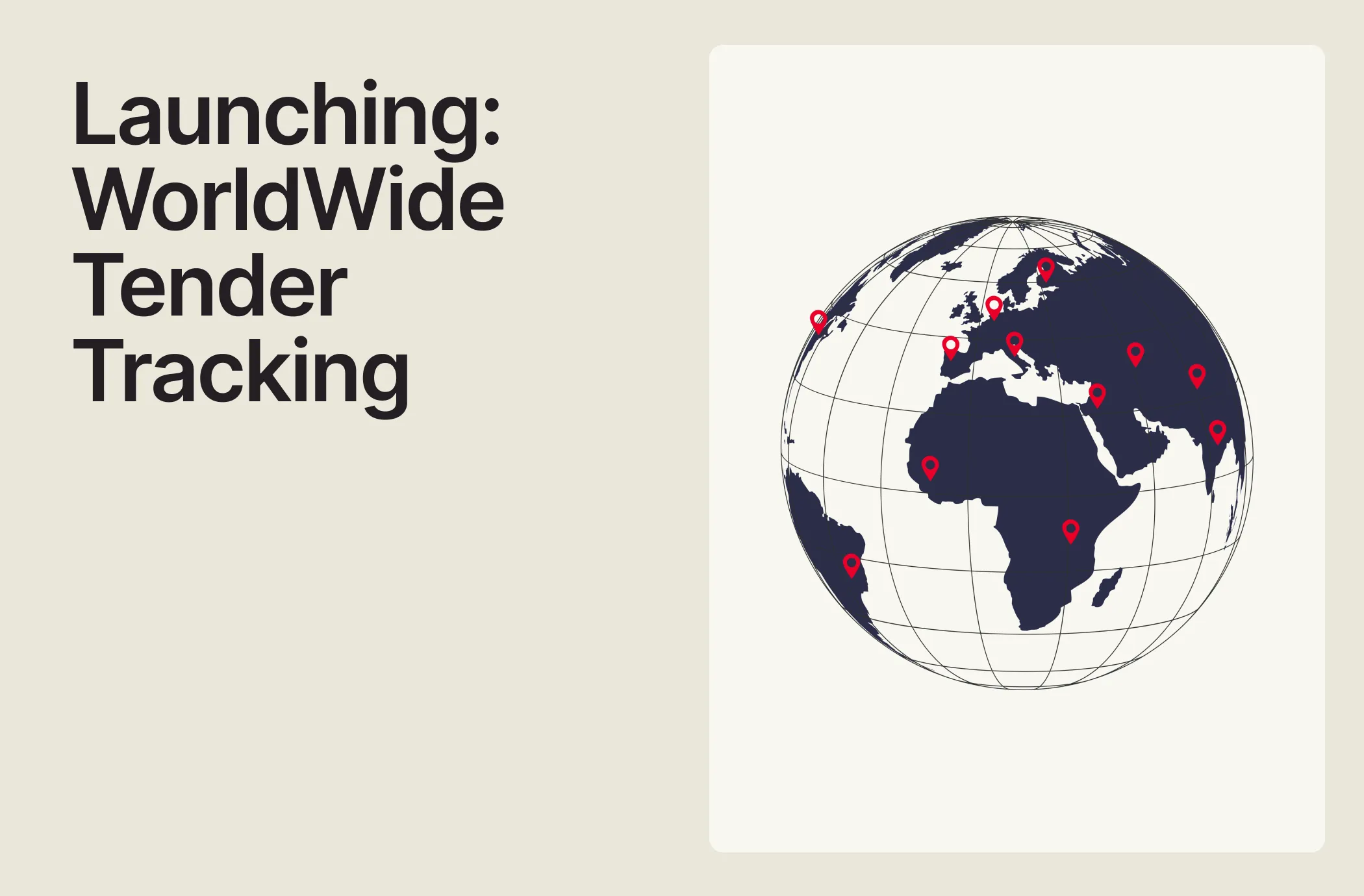In the consulting world, bidding for new work is high stakes: high fees, fierce competition, and reputational risk. Yet in most firms, the bid process remains fragmented and ad hoc; spread across spreadsheets, Teams chats, SharePoint folders, CRM systems, and AI tools like Microsoft Copilot.
This fragmentation reflects the usual story of consulting firms themselves: unified under one brand, but driven by a network of partner-led practices, each with its own P&L and revenue targets. The result is a disjointed approach to bidding where time is lost, collaboration is inconsistent, and win rates suffer.
Mistake #1: Pursuing Opportunities Without Rigorous Qualification
The Problem:
In many consulting firms, bid qualification varies widely. Large public tenders ( for example from ministries, tax authorities, or central government agencies) are typically managed by a central proposal team. But smaller or mid-sized RFPs are often handled directly by partners running their own practices. Without a unified, disciplined bid/no-bid process, firms end up chasing every opportunity that lands on their desk, regardless of strategic fit, capacity, or margin.
The Consequence:
Resources are spread thin, partner time is consumed by low-probability bids, and internal teams become overstretched. The overall win rate drops, resource allocation becomes inefficient, and both delivery and proposal teams experience burnout.
The Fix:
Establish a consistent qualification framework across both central and partner-led bids. Define clear criteria: strategic alignment (industry, service line, geography), resource availability, margin expectations, reputational risk, and delivery fit. Every opportunity should be screened against these filters before investment begins.
Mistake #2: Generic Value Propositions and Weak Differentiation
The Problem:
Many consulting firms end up reusing boilerplate language and outdated case studies, not because they don’t know better, but because the right content is nearly impossible to find. Reference projects and client success stories are scattered across SharePoint folders, local drives, or locked in personal inboxes. It can take hours, even days, to locate the right example or chase down colleagues for input (if you know who to ask in the first place). The result is a generic, copy-paste proposal that fails to speak to the client’s specific challenge.
The Consequence:
The result is a generic, copy-paste proposal that fails to speak to the client’s specific challenge. Evaluators see little meaningful difference between your bid and your competitors’. Even if you meet every technical requirement, you fail to build trust and distinctiveness, the very things clients pay a premium for.
The Fix:
Centralize and structure your reference materials. Build a searchable library of case studies, credentials, and methodologies tagged by client type, industry, and service line. This makes it easy for teams to locate, tailor, and refresh real-world examples. Strong proposals are not about reinventing the wheel but about surfacing the right stories quickly, and contextualizing them persuasively for each client.
Mistake #3: Poor Content Re-use and Library Management
The Problem:
Consulting bid teams often operate without a structured, intelligent content repository. Instead, they search across multiple drives, inboxes, and outdated proposal folders to piece together material. Consultant bios, case studies, and templates live in silos; often inconsistent, incomplete, or obsolete. Valuable knowledge exists, but it’s scattered and hard to retrieve.
The Consequence:
Bid teams waste hours recreating content that already exists. Version control issues lead to conflicting narratives and inconsistent messaging. Instead of focusing on strategy and storytelling, bid writers spend most of their time searching, copying, and formatting.
The Fix:
Go beyond static content libraries and adopt Agentic AI for smarter reuse. Intelligent systems can instantly surface the most relevant case studies, credentials, and templates, filtered by bid context, industry, and service line. They can even flag outdated material or suggest updates automatically. The goal is to shift human effort from administration to value creation so bid managers spend more time crafting the winning narrative, not hunting for slides. By letting AI handle the search and curation, bid teams can focus their energy where it matters most: shaping strategy, refining storylines, and writing proposals that win.
Mistake #4: Undefined Roles, Workflow, and Timeline
The Problem:
Many consulting bids begin the moment an RFP lands in a partner’s inbox, and chaos quickly follows. Without a shared workspace or defined workflow, teams scramble across emails, spreadsheets, and conflicting document versions. Roles blur, deadlines slip, and essential inputs get lost in the noise. Collaboration becomes reactive instead of strategic.
The Consequence:
Last-minute rushes, missed attachments, and submission stress are all too common. Quality suffers, compliance risks increase, and valuable time (and morale) are lost.
The Fix:
Move from scattered coordination to structured collaboration. Create a single “bid book”: a shared environment where all stakeholders co-create, review, and track progress in real time. This is where Agentic AI can be transformative: by pooling information from past bid books, automatically answering recurring requirements, and suggesting responses drawn from previous winning proposals. Instead of chasing colleagues for input, bid leads can simply ask them to review and refine, saving time, money, and frustration.
Mistake #5: Failing to Analyse Past Bid Performance
The Problem:
After a bid is won or lost, many consulting firms fail to conduct a structured review. No data is captured on effort, outcome, or lessons learned. This leaves teams guessing why they win or lose, and repeating the same mistakes.
The Consequence:
Without data, improvement stalls. Bid costs remain high, win rates plateau, and institutional knowledge is lost as teams move on. The firm becomes reliant on individual heroics rather than collective learning.
The Fix:
Create a culture of post-bid reviews. Capture metrics such as time spent, team composition, cost versus budget, win/loss reason, client feedback, and competitor insights. Use these insights to refine qualification criteria, improve content, and better allocate resources. This transforms bid management from a reactive process into a learning system that compounds over time.
Mistake #6: Submitting a Compliant But Story‑Weak Proposal
The Problem:
Consulting bids often over-optimize for compliance at the expense of storytelling. The team ensures every requirement is ticked but fails to convey why their approach is uniquely valuable.
The Consequence:
Even a technically strong proposal can fall flat if it doesn’t emotionally and intellectually engage evaluators. Without a compelling story that connects client challenges to your insight and impact, you risk being seen as interchangeable, or worse, forgettable.
The Fix:
Balance compliance with persuasion. Lead with the client’s problem and desired outcomes, then show how your team, method, and evidence deliver those outcomes better than anyone else. Use clear structure, relevant examples, and human language, not corporate jargon. A great bid doesn’t just inform; it convinces.
Mistake #7: Ignoring Data and Analytics in the Bid Process
The Problem:
Consulting firms often gather data but underutilize it. Many already have BI tools like Power BI or Tableau, but dashboards often stop at tracking volumes and values, missing deeper performance insights like win rates by sector, proposal cost per hour, or bid effort ROI.
The Consequence:
Firms lose sight of where they truly perform best. Without actionable analytics, it’s impossible to prioritize high-return opportunities or understand which patterns drive success. Data becomes a record, not a resource.
The Fix:
Refine how you use BI data. Move beyond reporting to interpretation, connecting metrics to decision-making. Track which types of bids yield the highest margins, which teams win the most, and how early involvement correlates with outcomes. Data maturity is less about having tools and more about asking the right questions and acting on the answers.
Mistake #8: Neglecting Hand‑Over to Delivery and Future Impact
The Problem:
In consulting firms, the transition from bid to delivery, and from delivery back into future bids, is often weak. Once the proposal is submitted, the team moves on, leaving delivery leads to interpret promises without context.
The Consequence:
Delivery teams face mismatched expectations, clients perceive inconsistency, and valuable learnings from delivery are never captured for future proposals. The result is a disconnect between what’s sold and what’s delivered, eroding trust and reducing reference value.
The Fix:
Integrate delivery teams early in the bid process. Use the same frameworks for delivery that were committed in the bid. After project completion, capture the outcomes, lessons learned, and client feedback, and feed these back into your content library. Every engagement should improve your next bid.
Looking ahead…
Bidding in the consulting world has evolved beyond compliance and formatting. It’s now a core expression of how a firm thinks, collaborates, and delivers value. The most successful consultancies view the bid process not as an administrative burden but as a strategic discipline that mirrors their client work: structured, data-driven, and insight-led.
Firms that consistently win are the ones that treat every proposal as a learning cycle. They use data to refine decisions, storytelling to translate expertise into outcomes, and process to align every contributor from partner to analyst. Over time, this creates not just stronger proposals but smarter organizations, ones that know where they win, why they win, and how to replicate that success.
Ready to reclaim your team’s time and win smarter? Book an Altura demo today.












.avif)




